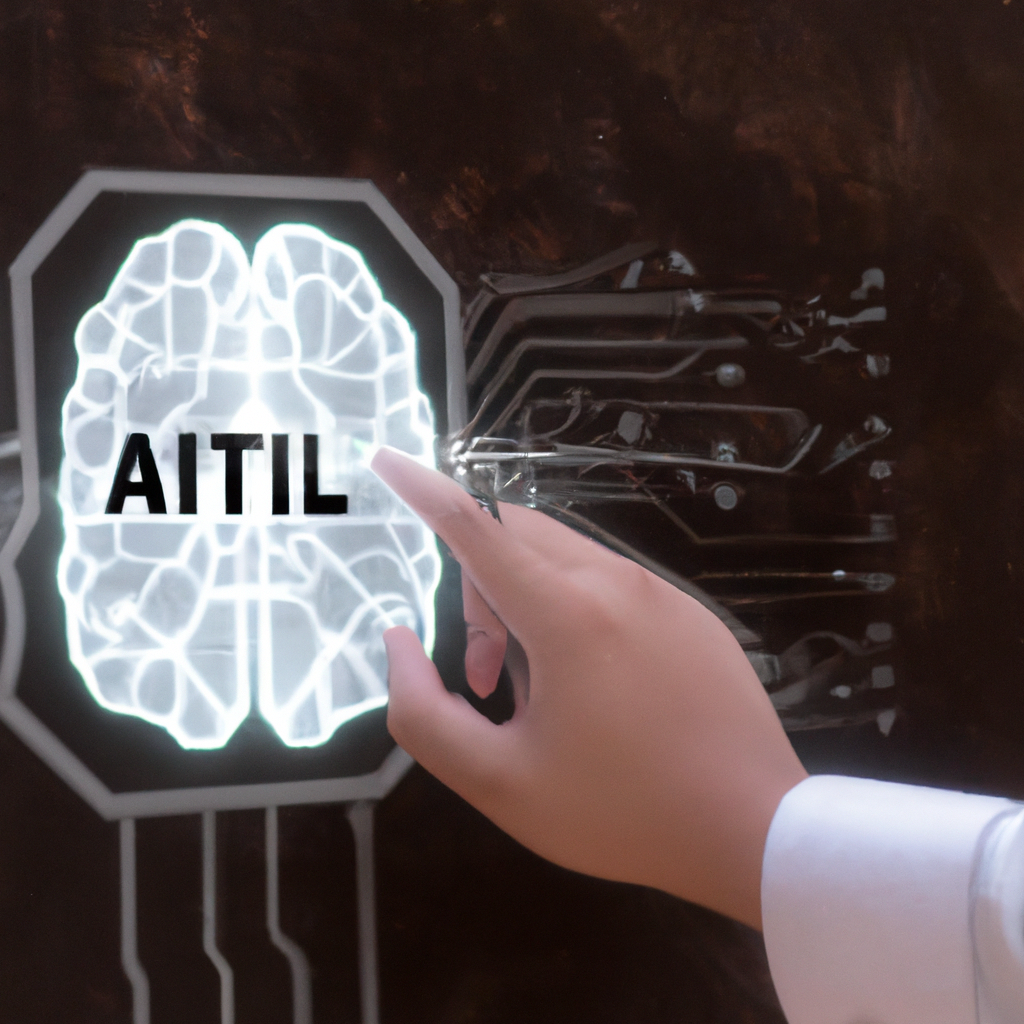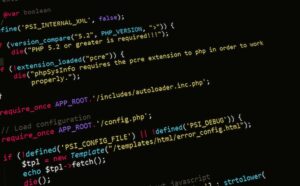-
Table of Contents
- Introduction
- Exploring the Benefits of AI-Powered Tutoring Systems in Education
- How AI is Transforming the Way We Teach and Learn
- The Impact of AI on Student Assessment and Evaluation
- The Role of AI in Personalizing Education for Every Student
- The Potential of AI-Powered Educational Games and Simulations
- Conclusion
.
Introduction
The use of Artificial Intelligence (AI) in education is revolutionizing the way we learn. AI is being used to create smarter and more accessible learning environments, allowing students to learn more effectively and efficiently. AI-driven technologies such as natural language processing, machine learning, and computer vision are being used to create personalized learning experiences, automate grading and assessment, and provide real-time feedback. AI is also being used to create virtual tutors and intelligent tutoring systems that can provide personalized instruction and guidance. AI is also being used to create virtual classrooms and online learning platforms that can provide students with access to educational materials and resources from anywhere in the world. AI is transforming the way we learn, making education more accessible and effective for everyone.
Exploring the Benefits of AI-Powered Tutoring Systems in Education
The use of artificial intelligence (AI) in education is becoming increasingly popular, and AI-powered tutoring systems are one of the most exciting developments in this field. AI-powered tutoring systems offer a range of benefits that can help students of all ages learn more effectively and efficiently.
One of the most significant advantages of AI-powered tutoring systems is their ability to provide personalized instruction. AI-powered tutoring systems can analyze a student’s performance and provide tailored feedback and guidance that is tailored to their individual needs. This can help students learn more quickly and effectively, as they are receiving instruction that is tailored to their individual learning style and needs.
Another benefit of AI-powered tutoring systems is their ability to provide real-time feedback. AI-powered tutoring systems can provide immediate feedback on a student’s performance, allowing them to make adjustments and improve their performance quickly. This can help students stay motivated and engaged in their learning, as they can see the results of their efforts in real-time.
Finally, AI-powered tutoring systems can also help reduce the cost of education. AI-powered tutoring systems can provide personalized instruction at a fraction of the cost of traditional tutoring services. This can help make education more accessible and affordable for students of all backgrounds and income levels.
Overall, AI-powered tutoring systems offer a range of benefits that can help students of all ages learn more effectively and efficiently. From personalized instruction to real-time feedback and cost savings, AI-powered tutoring systems can help make education more accessible and affordable for everyone.
How AI is Transforming the Way We Teach and Learn
AI is revolutionizing the way we teach and learn. From personalized learning to automated grading, AI is transforming the educational landscape.
AI-powered personalized learning is revolutionizing the way we teach and learn. AI-powered systems can analyze data from student interactions with educational materials and tailor the learning experience to each student’s individual needs. This allows teachers to provide students with a more tailored learning experience, helping them to better understand and retain the material.
AI-powered automated grading is also transforming the way we teach and learn. AI-powered systems can quickly and accurately grade student work, freeing up teachers’ time to focus on more important tasks. Automated grading also allows for more accurate and consistent grading, ensuring that students receive fair and accurate feedback on their work.
AI-powered virtual tutors are also becoming increasingly popular. Virtual tutors can provide students with personalized feedback and guidance, helping them to better understand the material. Virtual tutors can also provide students with additional practice and feedback, helping them to improve their skills and knowledge.
Finally, AI-powered educational games are becoming increasingly popular. Educational games can help students to better understand and retain the material, while also providing them with an enjoyable and engaging learning experience.
AI is transforming the way we teach and learn, and the possibilities are endless. From personalized learning to automated grading, AI is revolutionizing the educational landscape.
The Impact of AI on Student Assessment and Evaluation
The impact of artificial intelligence (AI) on student assessment and evaluation is undeniable. AI has the potential to revolutionize the way we assess and evaluate students, making the process more efficient and accurate.
AI can be used to automate the grading process, allowing teachers to quickly and accurately grade large numbers of assignments. AI can also be used to provide personalized feedback to students, helping them to better understand their strengths and weaknesses. AI can also be used to identify patterns in student performance, allowing teachers to better target instruction and provide more effective support.
AI can also be used to provide more accurate and reliable assessments of student performance. AI can be used to analyze large amounts of data, such as student test scores, to identify trends and patterns in student performance. This can help teachers to better understand how their students are performing and make more informed decisions about instruction and support.
Finally, AI can be used to provide more personalized assessments of student performance. AI can be used to analyze student data and provide personalized feedback to students, helping them to better understand their strengths and weaknesses. AI can also be used to provide personalized recommendations for students, helping them to make better decisions about their learning.
Overall, AI has the potential to revolutionize the way we assess and evaluate students. AI can be used to automate the grading process, provide personalized feedback, identify patterns in student performance, and provide more accurate and reliable assessments of student performance. AI can also be used to provide personalized recommendations for students, helping them to make better decisions about their learning.
The Role of AI in Personalizing Education for Every Student
AI is revolutionizing the way we think about education. By leveraging the power of artificial intelligence, educators can now personalize learning experiences for every student. AI can help teachers tailor instruction to meet the individual needs of each student, allowing them to learn at their own pace and in their own way.
AI can be used to analyze data from student assessments, providing teachers with insights into each student’s strengths and weaknesses. This data can then be used to create personalized learning plans that focus on the areas where each student needs the most help. AI can also be used to track student progress and provide feedback to teachers on how to best support each student’s learning.
AI can also be used to create personalized learning experiences for students. AI-powered virtual tutors can provide personalized instruction and feedback to students, allowing them to learn at their own pace and in their own way. AI can also be used to create interactive learning experiences that are tailored to each student’s interests and abilities.
Finally, AI can be used to create personalized learning environments. AI-powered virtual classrooms can be used to create a learning environment that is tailored to each student’s needs. AI can also be used to create virtual learning spaces that are designed to foster collaboration and engagement among students.
AI is revolutionizing the way we think about education. By leveraging the power of artificial intelligence, educators can now personalize learning experiences for every student. AI can help teachers tailor instruction to meet the individual needs of each student, allowing them to learn at their own pace and in their own way. AI can also be used to create personalized learning experiences, track student progress, and create personalized learning environments. With AI, educators can ensure that every student has the opportunity to reach their full potential.
The Potential of AI-Powered Educational Games and Simulations
The potential of AI-powered educational games and simulations is immense. With the help of artificial intelligence (AI), educational games and simulations can be designed to be more engaging, interactive, and personalized than ever before. AI can be used to create virtual environments that are tailored to the individual student’s needs and interests, allowing them to learn in a way that is both fun and effective.
AI-powered educational games and simulations can be used to teach a variety of topics, from math and science to history and language. AI can be used to create virtual worlds that are tailored to the individual student’s needs and interests, allowing them to learn in a way that is both fun and effective. AI can also be used to create adaptive learning experiences that adjust to the student’s progress and provide personalized feedback.
AI-powered educational games and simulations can also be used to help students develop important skills such as problem-solving, critical thinking, and collaboration. AI can be used to create virtual environments that are tailored to the individual student’s needs and interests, allowing them to learn in a way that is both fun and effective. AI can also be used to create adaptive learning experiences that adjust to the student’s progress and provide personalized feedback.
The potential of AI-powered educational games and simulations is immense. With the help of AI, educational games and simulations can be designed to be more engaging, interactive, and personalized than ever before. AI can be used to create virtual environments that are tailored to the individual student’s needs and interests, allowing them to learn in a way that is both fun and effective. AI can also be used to create adaptive learning experiences that adjust to the student’s progress and provide personalized feedback.
The possibilities for AI-powered educational games and simulations are endless. With the help of AI, educational games and simulations can be designed to be more engaging, interactive, and personalized than ever before. AI can be used to create virtual environments that are tailored to the individual student’s needs and interests, allowing them to learn in a way that is both fun and effective. AI can also be used to create adaptive learning experiences that adjust to the student’s progress and provide personalized feedback.
The potential of AI-powered educational games and simulations is truly exciting. With the help of AI, educational games and simulations can be designed to be more engaging, interactive, and personalized than ever before. AI can be used to create virtual environments that are tailored to the individual student’s needs and interests, allowing them to learn in a way that is both fun and effective. AI can also be used to create adaptive learning experiences that adjust to the student’s progress and provide personalized feedback. With the help of AI, educational games and simulations can be designed to help students learn in a way that is both enjoyable and effective.
Conclusion
AI and Education have the potential to revolutionize the way we learn. AI can provide personalized learning experiences, increase access to educational resources, and create a more equitable learning environment. AI can also help to reduce the cost of education and make it more accessible to people from all backgrounds. AI can also help to improve the quality of education by providing more accurate and timely feedback to students. AI can also help to reduce the burden on teachers by automating certain tasks and providing more efficient ways of teaching. AI can help to create a smarter and more accessible learning environment that is tailored to the needs of each individual student.




